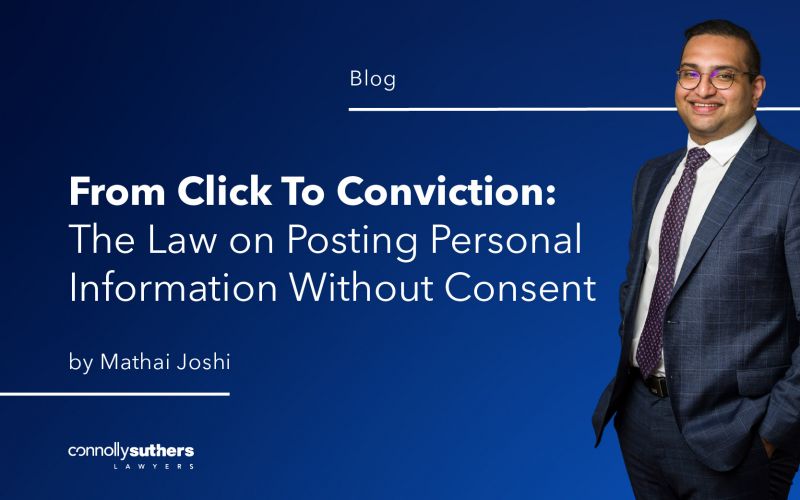Latest Legal Blogs

Is a Stepchild Eligible to Contest a Will in Queensland?
Is a stepchild eligible to contest a Will in Queensland? Eligibility criteria In Queensland, a stepchild has the same rights as a biological or adopted child to contest a Will provided the stepparent and the child’s natural parent did not divorce before the death of the stepparent. To be a stepchild (and eligible to contest the Will of the stepparent), the child’s natural parent and stepparent don’t have to be married. It applies if they are in a civil partnership or de facto relationship as well. In 2017, the law was amended to confirm that the child of a deceased’s civil partner or de facto partner falls within the definition of a stepchild. It is important to note that a stepchild remains eligible to contest the Will of the stepparent even when the stepparent remarries or enters into a de facto relationship or civil partnership after the death of the child’s natural parent provided that prior to the death of the child’s natural parent their relationship was not legally dissolved. Time frames for a stepchild to contest A stepchild who intends to contest a Will must do so within statutory time limits. The stepchild must notify the executor in writing of their intention to contest the Will within 6 months of the deceased’s death and they must file their Family Provision Application and commence proceedings within 9 months of the deceased’s death. Factors considered in a Family Provision Application While a stepchild in Queensland is eligible to contest a Will regardless of their age or dependence on the deceased, being successful in their claim for further provision from the deceased’s estate is a separate issue. The courts will look at a variety of factors when undertaking a Family Provision Application, such factors include: the financial and personal situation of the stepchild, the length, nature and closeness of the relationship between the stepchild and the deceased, the degree to which the stepchild was dependent on the deceased, competing claims (the claims and needs of other beneficiaries or applicants) and deceased’s reasons for excluding or minimising the stepchild’s share and the size of the deceased’s estate. Superannuation death benefits and stepchildren As to the eligibility of a stepchild to receive superannuation death benefits direct from the superannuation fund, a stepparent cannot nominate their stepchild as a beneficiary of their superannuation death benefits when the natural parent has predeceased or has divorced the stepparent. In such circumstances, the ATO has said that a stepchild is no longer entitled to receive death benefits directly from the superannuation fund unless the stepchild meets another definition as a dependant. Dying without a Will and stepchildren If a person dies without a Will, under Queensland’s Intestacy Laws, stepchildren are not automatically recognised as beneficiaries unless they qualify as a dependant in a Family Provision Application. If you would like assistance with any of the above information, please contact our Wills and Estates team via (07) 4771 5664.

Crimes Against The Elderly
Unconscionable, Criminal and Invisible Taking advantage of the old, frail and vulnerable members of society is more prevalent now than it ever was. People are living longer, they have more money and many are developing mental illnesses such as Alzheimer’s Disease.

Who Keeps The Pet?
Where you were married or in a de facto relationship, the Federal Circuit and Family Court (“the Court”) has jurisdiction to make orders regarding who gets ownership of pets following separation. Where parties can reach agreement about who is to keep the pet, an order for ownership of the pet can be included in property settlement orders. However, where parties cannot agree who is to keep the pet, the court can decide who gets ownership of the pet as part of property settlement. Previously, the Court viewed pets strictly as property and did not consider whether there was any attachment to the pet or what was in the pet’s “best interests” when determining who should keep the pet. When determining who would keep the pet, the Court would consider:- Who purchased the pet, whose name it was registered in with the council and whose name the microchip was registered to; Who paid for the purchase of the pet and associated expenses (including vet costs, food, insurance etc); Who cared for the pet (ie feeding, bathing, walking, taking to the vet etc). Fast forward to June 2025 and the Court’s approach has changed due to the amendments to the Family Law Act 1975 (“the Act”) which came into effect on 10 June 2025. Whilst the Court still view pets as “property”, the Court now also considers several factors when determining who should get ownership of the pet, including attachment by a party or child to the pet, family violence, and history or threatened cruelty or abuse by a party towards the pet. The term now used for a family pet in the Act is “companion animal”. A “companion animal” is defined in the Act as “an animal kept by the parties to a marriage or either of them, or the parties to a de facto relationship or either of them, primarily for the purpose of companionship”. A “companion animal” does not include:- An assistance animal within the meaning of the Disability Discrimination Act 1992; An animal kept as part of a business; An animal kept for agricultural purposes; or An animal kept for use in laboratory tests or experiments. Due to the amendments to the Act regarding companion animals, section 79(6) of the Act provides the Court can make one of the following orders:- One party is to have ownership of the companion animal; or Ownership of the companion animal be transferred to another person who consents to the transfer of ownership; or The companion animal be sold. The Court cannot make orders for shared ownership/care of pets. When considering what order the Court should make in relation to companion animals, section 79(7) provides the Court is to take into account the following considerations (if relevant):- The circumstances in which the companion animal was acquired (ie gift, joint purchase, pre-relationship ownership); Who currently has ownership or possession of the companion animal; The extent to which each party cared for, and paid for the maintenance of, the companion animal; Any family violence to which one party has subjected or exposed the other party; Any history or actual or threatened cruelty or abuse by a party towards the companion animal; Any attachment by a party, or a child of a marriage, to the companion animal; The ability of each party to care for and maintain the companion animal in the future, without support or involvement from the other party; Any other fact or circumstance which, in the opinion of the court, the justice of the case requires to be taken into account. Need advice? If you have separated and are concerned about who will get ownership of your pet, our Family Law Team can provide you with advice. Contact our Family Law Department, if you would like to arrange an initial consultation.

Queensland Trust Law Reform: Vesting Period Extended to 125 Years
Effective 1 August 2025, Queensland has introduced a major reform to trust law, extending the maximum vesting period for trusts from 80 years to 125 years. This change, under the Property Law Act 2023 (Qld), offers new opportunities for long-term estate planning and wealth management. What’s Changed? The reform: Abolishes the common law rule against perpetuities Introduces a fixed statutory vesting period of 125 years Applies to new and existing trusts governed by Queensland law Who Does This Affect? Trusts eligible for the extended vesting period include: Discretionary trusts Unit trusts Fixed trusts Bare trusts Testamentary trusts To qualify, the trust must have a substantial connection to Queensland, such as: Queensland-based trustees Queensland-held assets Queensland-resident beneficiaries Why It Matters Extending the vesting period offers: Deferral of CGT and other tax consequences Greater flexibility in succession planning Enhanced asset protection Longer-term income distribution strategies What Should Trustees Do? Review your trust deed for amendment powers Amend the vesting date if permitted If not, consider: Seeking beneficiary consent Applying to the Supreme Court of Queensland Legal Insight from Connolly Suthers This reform presents a valuable opportunity for trustees and advisers to future-proof their trust structures. Our experienced team can: Review and amend trust deeds Advise on legal implications Assist with court applications if needed Contact us today to discuss how this change may benefit your trust.

Discretionary Trusts & Rights of Beneficiaries
Is a beneficiary of a Trust entitled to legally privileged trust documents? When presented with this question many good lawyers would at first glance and without thinking it through probably answer “Good question…. The answer is “no”. Others lawyers that are more battled wearied may answer it with a question “Who would win a fight between a lion and a tiger?” which is another way of saying that old chestnut “it depends”. There is no question that nearly all trustees will not want to release anything at all to a beneficiary (particularly if they are estranged, troublesome, and up to no good). The Beneficiaries – who are they? Beneficiaries (commonly in the modern commercial world and in the context of disputes regarding deceased estates) can include:- discretionary (primary and wider beneficiaries) of discretionary trusts; children of members of super funds (they are potential recipients of a death benefit payment – this extends to spouses and those in interdependency relationships – it can also extend to extramarital partners and de facto partners of married members); What documents might a Beneficiary want to see? Often they want to see if any mistakes have been made by a Trustee along the way (to assist them to mount or improve a claim). They will want anything they can get their hands on including:- Financial Statements; Investment Strategies and Trustee Minutes; Investment Advice; Deeds of Variation and Appointment of New Trustee (the full document trail); Pension Documents. Generally, there are two different types of information: trustee information, being information generated or held for the purposes of a trust, and which a trustee would be required to hand over to a replacement trustee; personal information, being information held by a trustee relating to a trust which is personal to the trustee, and paid for by the trustee. There are three ways for a beneficiary of the trust obtaining this information:- the Trustee willingly discloses the information; a superior court (using its inherent jurisdiction) orders it be disclosed; or when litigation is on foot, the documents are disclosed as part of the court disclosure rules. The first category of documents (trustee information) is vulnerable to being disclosed to beneficiaries. The second category (personal information) on the other hand is not, but it may be relevant to issues in litigation and therefore be required to be disclosed in accordance with disclosure rules in the course of the litigation. For both categories, a Trustee may be able to claim privilege to resist disclosure of documents. In the recent New Zealand case of Lambie Trustee Ltd v Addleman https://www.courtsofnz.govt.nz/assets/cases/2021/2021-NZSC-54.pdf it was found that all advice in issue in the proceedings was covered by legal professional privilege so that, against non-beneficiaries, the Trustee was entitled to assert privilege. Importantly though, the Court confirmed that a trustee is not entitled to privilege against a beneficiary of the trust in respect of advice on issues in which the trustee and beneficiary have a joint interest. In this case, the Court found that the Trustee and the Beneficiary had a joint interest in the administration of the Trust and therefore Trustee could not claim privilege in relation to the legal advice obtained by the Trust regarding its administration. If there is bitterly fought out litigation between the Trustee and the beneficiary the position is different. The court said:- “What is required for the joint interest exception not to apply is that the advice be sought for the dominant purpose of defending litigation. Given the obligations of a trustee to act appropriately and in the interests of the trust as a whole, the starting point for the courts should be the assumption that trustees seeking advice in respect of contemplated litigation are looking for guidance as to the right course of action (in respect of which the joint interest exception will apply). And the courts can expect trustees not to seek advice as to how to resist litigation without having first sought advice (to which the joint interest exception will apply) as to the appropriate stance to take on the point at issue.” “The authorities generally support the view that once a beneficiary commences litigation concerning the administration of a trust, the litigating beneficiary is not entitled to disclosure of legal advice received by the trustees in relation to that litigation. The judgments on the point tend to be succinctly expressed but they must proceed on the basis that, from that point, the beneficiary and trustees no longer have a joint interest in the subject matter of the litigation.” To summarise, once litigation had commenced, the trustee and the beneficiary were in competing positions so the “joint interest exception” to privilege would not apply. Beneficiaries and trustees share a joint interest in the due administration of a trust and therefore in legal advice as to that administration. A trustee is not entitled to assert privilege against a beneficiary in respect of advice on issues in which the trustee and beneficiary have a joint interest. Trustees (who must act in good faith at all times) should assume that all trustee information could be disclosed to beneficiaries unless it is created when there is contentious litigation between the trustee and the beneficiary and is for the dominant purpose of that litigation. The same principles discussed in the Lambie Case apply and similar results can be expected in Australia. If you would like assistance with any of the above information, please contact our Wills and Estates team via (07) 4771 5664.

Proposed changes to Queensland Domestic Violence Law: What do these new changes mean?
Over the past five (5) years there has been considerable changes to the Domestic Violence Laws in Queensland. These changes have included significant changes such as allowing the Court to only consider making a cross-order in the most exceptional of circumstances; ensuring that perpetrators of domestic violence are held to account and victims are provided with protection. Further significant changes to Queensland’s Domestic Violence laws are on the way and they pose a significant change to how these matters are now considered by both the Police and the Courts. On 30 April 2025, the Minister for Domestic and Family Violence in the Queensland Government introduced the Domestic and Family Violence Protection and Other Legislation Amendment Bill 2025 which proposes significant changes to the Domestic Violence regime in Queensland. One of the most notable changes is the adoption of the Tasmanian approach by giving Police the power to impose on the spot protection orders, known as Police Protection Direction (PPD’s). This direction is an order which is made by police immediately to alleged domestic violence offenders, for twelve months, without the need to go to Court. Video Recorded Evidence Some of the other significant changes to the law include the expansion of the Video Recorded Evidence in Chief pilot program as state-wide law. At present the current pilot program applies in Ipswich, Southport, and Coolangatta Magistrates Court however the new Bill proposed will expand this practice to Magistrates Courts throughout Queensland. This provision is an expansion of the Evidence Act 1977 (Qld) and allows adult complainants in domestic violence criminal proceedings to give evidence in chief by a video recorded statement. Electronic Monitoring Devices Another new change to the legislation is the inclusion of electronic monitoring of high risk domestic violence offenders. This allows the Court to impose as … Police Protection Directions (PPD) In Queensland the current practice to obtain a Domestic Violence Order requires a person to either prepare and lodge a private application for a protection order, or through a police investigation where an application is sought on behalf of an aggrieved by a Police Officer. A Magistrate will then consider the merits of the application and determine whether or not a final order should be made. This new regime will grant Police the power to issue a PPD Direction when a Police Officer considers that it is appropriate for a matter to not proceed to Court and instead be finalised with an initial PPD. This approach has been in practice in other states such as Tasmania where an authorised officer may issue a Police Family Violence Order (PFVO) for twelve months avoiding the need to obtain a protection order from a Court. This approach to obtain a protection order without the need for a Court to consider the application is a significant change to the current Domestic Violence Laws. One of the main concerns in this approach is the risk of victims being incorrectly identified. When is a PPD not appropriate? To ensure that this risk is significantly minimised the legislation includes a safeguard to prevent misidentification from occurring. The Act achieves this by ensuring that there are certain circumstances in which a protection order can only be considered by the Court. According to Section 100C of the Bill, a PPD will not be available in the following conditions:- Where the Respondent or Aggrieved are identified as a Child; Where the Respondent or Aggrieved are a Police Officer; Where a DVO will recognise interstate orders relating to the parties as enforced or has previously been enforced; Where there is already a PPD against a respondent in force or has been in force; Where the Respondent has been convicted of a domestic violence offence within the previous two (2) years; Where a proceeding for a Domestic Violence offence against the Respondent has started but has not been disposed of; Where an application for a protection order against the respondent has been made but not dealt with, meaning an ongoing protection order; Where the Respondent has used, or threatened to use, an offensive weapon or instrument to commit the relevant domestic violence; and; That in relation to the domestic violence, there are indications that both persons are in need of protection and the person who is most in need of protection cannot be identified – meaning cross-application circumstances. Process for Police to obtain a PPD For an officer to obtain a PPD, they must seek approval from a supervising officer. For a PPD which includes a cool-down condition, the appropriate rank of the supervising officer to consider this must be a Sergeant. When an officer is seeking to obtain a PPD which includes an ouster condition or a no contact condition, they must obtain approval from the supervising officer of at least a Senior Sergeant. Can PPD’s be reviewed or challenged? Under the proposed Bill, there are mechanisms in which these immediate orders can be reviewed. Firstly, there is an ability for Police to review the decision to issue a PPD which is done under section 100T of the Act. This is done where an officer will review their decision if the officer becomes aware of circumstances or reasonably believes there are circumstances that were not known of or considered when the PPD was issued. The Aggrieved, Respondent, and an authorised person on behalf of the Aggrieved and the named person may also apply for a police review of a PPD. This must be done within 28 days of the PDD. Secondly, the Court has the ability to review the decision of whether to issue a PPD. Section 100Z of the Act states that at any time while a police protection direction is in force a person can apply to the Magistrates Court for a review of the direction. When the Court is considering the review of the PPD, this process is not an appeal meaning that the decision from the Magistrate can be ultimately reviewed on an appeal to the superior Court. The Court will consider an application to review the PPD to determine whether or not it is necessary or desirable for the PPD to be made. This consideration is only whether it is necessary or desirable at the time of the review, not at the time the Police issued the PPD. The Court ultimately has the power to set aside the PPD or decide to dismiss the application for a protection notice as a whole. Is this a positive step? The current Domestic Violence regime allows the Court to solely decide applications and whether they should continue. The proposed Bill identifies a streamline approach for Police to be better equipped in handling the high volume of Domestic Violence Cases. This is a positive step in ensuring that victims of domestic violence are protected and perpetrators are held to account. Despite its good intentions, there are concerns about the practicality of the system. The making of a protection order is not a criminal offence, however it can have a significant impact in a professional capacity such as affecting the ability to hold a relevant security clearance, explosives or weapons license (often required in some mining positions), and a working with children blue card. Domestic Violence is a complex issue in our society today, rightfully so it is a serious epidemic which needs to be addressed. At the same time, these situations are highly volatile and there is a lot at stake in these matters. Police have an unenviable position in trying to split the baby with the bath water in identifying domestic violence and protecting victims. The ability for Police to have an expanded role in issuing Protection Order Directions is a positive step but needs to be balanced to ensure that victims are not incorrectly identified, that orders are not made on lightly and ensure that due process is otherwise followed. If you are facing a Police Protection Direction, Police Application for a Domestic Violence Order, or are requiring assistance in obtaining a Protection Order contact our Criminal Law team today. Our team at Connolly Suthers is highly experienced in the area of Domestic Violence Law and we regularly appear in the Domestic Violence Specialist Court to assist clients in this area. A link to the Explanatory notices of the proposed legislation is here:- chrome-extension://efaidnbmnnnibpcajpcglclefindmkaj/https://www.legislation.qld.gov.au/view/pdf/bill.first.exp/bill-2025-024#:~:text=The%20Bill%20will%20enable%20police,not%20to%20proceed%20to%20court.

From Click to Conviction: The Law on Posting Personal Information Without Consent
Understanding implications of Section 474.17C of the Criminal Code Act 1995 (Cth) It is no surprise that we are well and truly living in the digital age of technology. We live in a time where the internet and social media play a significant role in the way we live our lives as well as improve how we do our jobs. Whether it is from posting, sharing, or tagging each other, one misguided click or ill thought social media post can now put you in position where you can face serious legal consequences. Recent changes to the Federal Criminal Law in Australia, sharing a person’s personal information online without their consent, despite whether or not the content is truthful, can constitute a Commonwealth Criminal Offence. Section 474.17C of the Criminal Code Act 1995 (Cth) criminalises the use of a carriage service (such as the internet, phone, or social media) to make available or publish the personal data of a person in a way that is either menacing, harassing, or offensive. This new criminal offence is the Australian Government’s response to the modern practice of ‘doxing’ which is when a person publicly shares someone’s personal details to shame, intimidate or endanger them. When and Why was this passed? Section 474.17C was included in the Privacy and Other Legislation Amendment Bill 2024, which was a Bill designed by Parliament to introduce a range of measures to protect the privacy of individuals with respect to private and personal information. The Bill expands the Information Commissioner’s powers and, in the context of Criminal Law, to create offences targeting the release of personal data using a carriage service in a manner which would be menacing or harassing. The Minister responsible for the bill in his second reading speech, outlined the growing risks posed by people misusing digital platforms to expose or endanger others, often in a context of domestic disputes. The law is said to fill in the gap where there is no existing offence which deals with the public disclosure of personal information with an intent to harm. What does the offence Criminalise? Under the new provision, a person commits an offence if they:- Use a carriage service (e.g., phone, text, email, social media), To make available, publish, or transmit personal information of one or more individuals, Without the consent of those individuals, In a way that a reasonable person would regard as menacing, harassing, or offensive. Key points are as follows:- Personal information can include names, addresses, phone numbers, workplace details, and more.There is no constraint of the type of the information. The law does not require the information to be true or false, meaning that there is no requirement as to the veracity of the post rather the intention behind it. The offence primarily focuses on the intent and impact of the post and whether the act could cause fear, distress, or reputational harm. The key mental element is that of recklessness and whether you had an awareness that there was a substantial risk that what you post could be regarded as menacing, or harassing despite being aware of the risk. Who can be affected? It is important to note that because it involves a ‘reasonable person’ test there will be a wide disagreement between people as to what will be expected when it comes to privacy and publication of personal information. The rationale behind this offence creates problematic scenarios of what may or may not be criminal conduct because it has a broad application across both personal and professional settings. Conduct may include:- An ex-partner posting someone’s private address online. A former employee leaking client or staff details on social media. A social media user naming and shaming someone in a viral post with identifying details. Even if there is no financial motive, the emotional or reputational fallout—and the reckless disregard for safety—can be enough to trigger a charge. The conduct could even include that of posting information in relevant local Facebook pages identifying someone for an alleged act or conduct. Summary These new provisions show that regardless of what we may intend to post, ignorance will not suffice as a defence to reckless behaviour online. What might feel like a quick post in the heat of the moment could result in serious criminal charges. This new provision is a significant step in addressing inappropriate online conduct and the need to regulate it like any other form of abuse of intimidation. So before you click “post” consider whether it is worth risking a potential criminal conviction. If you have been charged with a Criminal Offence either in Queensland or a Federal Commonwealth Offence it is incredibly important that you get immediate legal advice before speaking to Police. At Connolly Suthers we have a designated Criminal Law team ready to assist you.

Burial Wishes - Binding Or Not?
When drafting a will, many people are eager to include specific instructions about their burial or cremation wishes. This is understandable. Where your remains are laid to rest for eternity seems like a very important part of the dying process. Eternity does of course seem like a long time. But, are burial wishes included in your will legally binding? The short answer is no. While your burial preferences may be expressed in your will, they are not enforceable by law. Who legally has the right to decide your burial arrangements? In Queensland, the legal position is that the control of funeral and burial arrangements of the deceased typically rests with the executor of the Estate. An executor is the person tasked with carrying out the terms of your will, including the decision making around your funeral arrangements. If you do not have a will this responsibility will fall on the person with right to apply for Letters of Administration. Depending on your situation if you die without a will (also known as dying intestate) your executor is typically your spouse or child. In Queensland, Rule 610 of the Uniform Civil Procedure Rules 1999 (Qld) provides the people with priority when applying for Letters of Administration for matters of intestacy. What about funeral insurance? Many people turn to funeral insurance to ensure that their funeral arrangements are clearly set out. Funeral insurance is not compulsory, and we wouldn’t say its an imperative. However, it is important to ensure that if you do insist on funeral insurance that your benefits eventually go to the intended recipient by carefully checking the policy and who you have designated as beneficiary. Typically, people assume that their funeral insurance payout will automatically go to their executor. However this is not the case. To ensure your insurance is being paid out to the correct person:- Carefully choose your beneficiary – Ensure the policy names the correct person, being your executor. Keep Your Policy Up to Date – Life changes may require you to update our beneficiary. Communicate Your Wishes – Inform your beneficiary of their role and how the funds should be used. Overall, funeral wishes are a bit of a grey area. They might be followed but they aren’t binding. If you want something unique its best to let the people around, you know. If you’re needing some inspiration for a ‘unique approach’ to burial and cremation try looking in to how Keith Richards commemorated his late father. Unique is probably an understatement for what happened there….

Enduring Power of Attorney: The Essential Companion to Your Will
Planning for the future can feel overwhelming, and understanding which estate planning documents you need isn’t always straightforward. Many people are well aware of the importance of having a Will and are eager to finalize one. However, fewer people show the same enthusiasm when it comes to completing their Enduring Power of Attorney (EPA). Often, a Will is seen as the main focus, while the EPA is the overlooked sidekick. While it may not be the most exciting document to consider, having a well-drafted EPA is crucial in ensuring that your affairs are managed according to your wishes by the person you choose. The person you appoint as your Enduring Power of Attorney can significantly impact your future well-being. An EPA is more important than a Will in that you will still be alive. What is an Enduring Power of Attorney? An EPA is a legal document that allows you to appoint one or more individuals to manage your personal, financial, and health-related decisions. Unlike a standard Power of Attorney, which becomes void if you lose mental capacity, an Enduring Power of Attorney remains in effect even when you are no longer able to make decisions for yourself. For health-related decisions, no one can act on your behalf unless you have lost capacity. However, when it comes to financial matters, you have two options: Immediate Authority – You can choose to grant your attorney/s the power to manage your finances as soon as the document is signed. This can be helpful if, for example, you are traveling overseas and need someone to handle financial matters in your absence. Also you may have capacity but are too ill to handle your financial matters. Your attorney can attend to your business affairs without having to prove you have actually lost capacity. Authority Upon Loss of Capacity – Alternatively, you can elect that your attorney/s only have power over your financial affairs once you lose capacity. In this case, they would need to provide evidence of your incapacity before stepping in. While this option ensures you maintain full control until necessary, it can also create challenges when immediate action is required. How Many Attorneys Should I Have? There is no one-size-fits-all answer when it comes to appointing attorneys under an Enduring Power of Attorney. The decision should be based on your personal circumstances and who you trust in your life. Some people choose to appoint a single attorney with a substitute in case the first attorney is unable to act. Other people opt to appoint multiple attorneys to act jointly. This way multiple attorneys share responsibility. Where you decide to appoint more than one attorney, it’s important to consider how they will work together: Jointly – This means they must agree on all decisions together. This can provide an extra layer of oversight but may also cause delays if your attorneys can’t reach a decision; Severally – With this option each attorney to act independently. This can make decisions more streamlined however requires a higher level of trust in you’re the attorneys to make decisions alone. Where one of your attorneys is difficult to access or lives far away from you this can be a preferable option. Jointly and Severally – Giving attorneys the option to act together or separately. This way they can either all sign off on a decision, but it is not compulsory. When selecting your attorneys, consider their relationship with each other, their ability to communicate effectively, and their capacity to manage financial and personal affairs. For example, if your adult children have never gotten along, appointing them as joint attorneys is probably not the best way to coax a newfound friendship. Choosing the right people can make all the difference in ensuring the right decisions are made for you.

